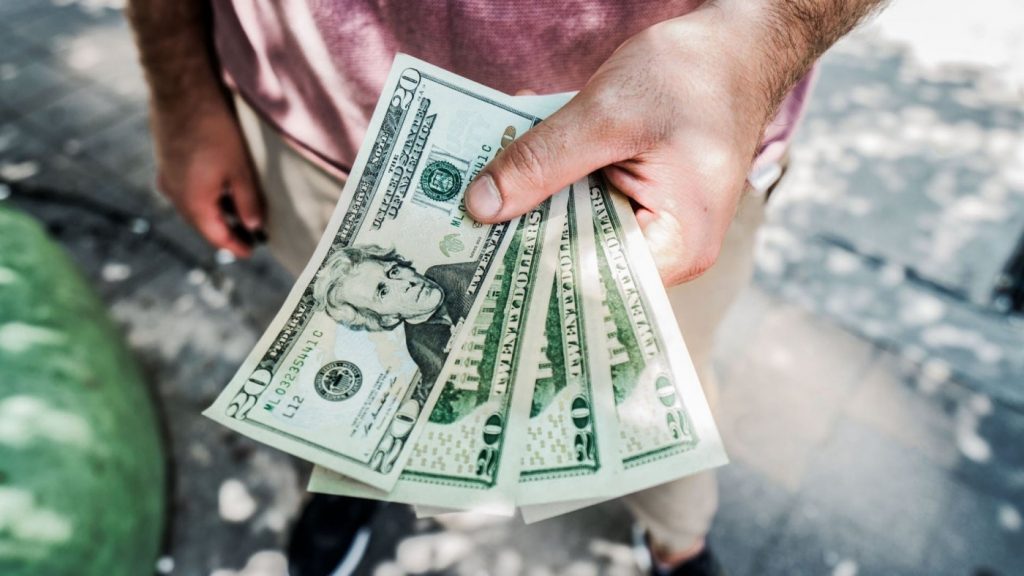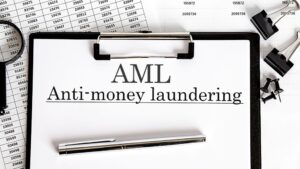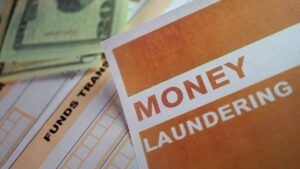Table of Contents
Examples Of Money Laundering From HistoryMoney Laundering In Simple TermsDefinition Of Money LaunderingPredicate OffensesMoney Laundering ExamplesMoney Laundering Examples Misusing Financial BusinessesMoney Laundering Examples Misusing Non-Financial BusinessSummary
You may already have your own idea of what money laundering is might think about turning dirty money into clean or laundered money. If you have something like that on your mind you are not too far away from the actual explanation.
Examples Of Money Laundering From History
In fact, a common explanation that you will commonly find about the term money laundering involves the American gangster boss Al Capone. According to the legend, gangsters like Al Capone made an unspeakable amount of cash during the time of the Prohibition in the 1930’s in the United States. But using the cash turned out to be difficult, because what explanation should they give on the source of the funds? Obviously, they couldn’t really tell anyone, that they engaged in criminal activities such as alcohol #0C1721smuggling. They came up with the idea to comingle the illegally obtained money with legitimate business operations. By doing so, they would obscure the source of the funds and make them appears as legitimate earnings. Al Capone allegedly used cash-intensive business like actual laundromats for these operations. Because he literally used laundromats for cleaning his dirty money, this activity is referred to as money laundering.
However, in more informed circles this is considered to be a myth. It rather appears that the term money laundering has emerged during the Watergate Scandal in the 1970’s.
Money Laundering In Simple Terms
Money laundering in simple terms describes the activity of concealing or disguising the identity of illegally obtained proceeds. This activity has the goal of making the illegally obtained proceeds appear to have originated from legitimate sources.
The precise definition of money laundering varies slightly in each country where it is recognized in the criminal law, and it varies according to relevant organizations and standard-setting bodies.
Definition Of Money Laundering
To give you a few examples of different definitions of money laundering:
The German Criminal Code keeps it rather simple and describes money laundering as “concealing unlawfully acquired assets.”
The Financial Action Task Force describes money laundering “as the processing of […] criminal proceeds to disguise their illegal origin.”
Common between all definitions of money laundering is that they contain two key elements:
Funds or assets that were obtained through criminal or illegal activitiesDisguising the illegal origin of these funds are assets
Predicate Offenses
For the first element it is, therefore, necessary to conduct a crime first and to make money from it. These crimes that build the basis for money laundering are called predicate offenses.
Predicate offenses vary in each country and are usually codified in a country’s criminal code.
Exemplary predicate offenses may include crimes such as narcotrafficking, tax evasion, murder and grievous bodily harm, corruption, fraud, smuggling, human trafficking, illegal wildlife trafficking, and forgery.
If one conducts such a predicate offense, makes money from it, and tries to hide the illegal origin of the funds, this makes for money laundering.
Money Laundering Examples
The methods criminals use to launder their funds are almost infinite. The universe of money laundering methods is incredibly large and there is not a single person who has seen it all. Even within money laundering operations of the same type you will find great differences. Similar yes, but never identical.
Money laundering examples can involve the use of financial business and non-financial businesses.
Money Laundering Examples Misusing Financial Businesses
Financial businesses are usually the ones who are most frequently misused for money laundering purposes. Especially the larger money laundering cases almost always involve a financial business, usually a bank.
But there are other types of financial businesses that might be misused for money laundering purposes. This includes nonbank financial institutions such as money services businesses and the credit card industry.
The simplest and one of the most commonly used example for money laundering is using wire transfers. This is a quite simple and every-day banking product, but a simple wire transfer remains to be among the methods that are being used by criminals to move a large volume of money.
For example, criminals can initiate unauthorized domestic or international wire transfers by making cash advances on a stolen credit card—and place the funds into an account established to receive the transfers.
It seems too simple to be true and maybe even to trivial, but wire transfers remain the number one method for money laundering. But professional money launderers can make these simple electronic transfers incredibly complicated by remitting a large number of funds, splitting them, comingling them, using different banks in different countries. It can get really complicated.
Let’s consider one example. The Italian mafia organization Ndrangheta, which is considered as one of the largest criminal organizations of the world, execute an average of 90 transactions per money laundering operations.
Money Laundering Examples Misusing Non-Financial Business
Non-financial businesses can be a good opportunity for criminals and money launderers as well, but, in comparison, require a different strategy or setup. Non-financial businesses are less often seen in the bigger money laundering cases. With the exception of some casinos, which can be a misused for laundering larger sums as well.
Casinos are actually a good example for money laundering. There are actually a few different money laundering methods involving casinos. In one method the criminal walks into a casino and buys chips with illicit cash. The criminal will then play for a relatively short time, lose some money, win some money, and eventually cash in the chips. The criminal will then receive a check and a receipt, so the proceeds can simply be claimed as gambling winnings.
This method has gotten a lot harder in some jurisdictions due to tighter controls and regulations, but it still can have and had in the past a preposterous scale. In Canada for example, criminals laundered millions and millions of Dollars through casinos. When they investigated the footage of the video cameras at some point, they saw the criminals coming in with suitcases stuffed full of money. And believe it or not, some even came in with these large hockey bags to haul the cash.
Summary
The baseline for money laundering is to make money from a criminal activity. These activities are called predicate offenses. Examples include drug dealing and human trafficking. Obviously, criminals want to enjoy their money and use it for legitimate purchases, like purchasing a sports car or jewelry, but they can’t disclose the source of funds. They therefore engage in activities to conceal the source of funds and disguise the illegal origin. This process is known as money laundering. The definition of money laundering varies slightly in most countries, but a widely accepted definition of money laundering is describing it as the processing of criminal proceeds to disguise their illegal origin. Money laundering is illegal, because preventing criminals from being able to enjoy the funds is one of the most successful strategies of law enforcement.
Examples of money laundering can include financial and non-financial business operations. A criminal could, for example, use a large number of complex wire transfers to disguise the illegal origin of the funds. The criminal could also go into a casino, exchange the funds for chips, gamble for some time, and cash-out.
Money laundering can get very complex and having an understanding of what money laundering actually is and what makes for it, is an essential step in successfully fighting money laundering and other financial crimes.




